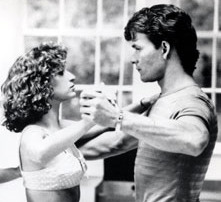Packt Like Sardines In A Crushed Tin Box

Everyone knows these situations. You are squeezed into a subway or bus. People are closer than it is comfortable for you. You own private space is invaded. These so called “crowding situations” give us a hard time, because we like to arrange our distance zones individually. When we are forced to limit these proxemics, our personal space, we feel uncomfortable. These are culturally defined.
The anthropologist Edward Twitchell Hall researched four different proxemics.
The intimate distance (for embracing, touching or whispering 6-18 inches), the personal distance (for interactions among good friends or family members 1,5- 4 feet), the social distance (for interactions among acquaintances 4-12 feet) and the public distance (used for public speaking 12-25 feet). The distance is estimated for communication situations and varies between cultures and other environmental factors.
People from northern Europe need a larger personal space, than southern Europeans. (Latin American and oriental people are even described as “contact cultures”). Surveys showed for example that British people touch their conversation partner very seldom or never, however a Puerto-Rican touches the conversation partner up to 180 times.
„This is my dance space. This is your dance space. I don’t go into yours, you don’t go into mine. You gotta hold the frame.”
Johnny Castle in Dirty Dancing

How is this your private space treated in our church culture?
This week I read MaryKate Morse book “Making Room for Leadership: Power, Space and Influence.” In her book Morse connects leadership with the use of the body in relational space. Morse created a framework differentiate the various kinds of power exercised in interpersonal relationships: Expert power (by special knowledge, skills, training or experience), character power (given by a group because of observed quality of character), role power (given thought a particular role in an organization), culture power (depending on the culture and on their values). All four dimensions can have positive or negative effects.
To be aware of this dynamic ensures a reflected use and application of social power to the individual leadership context.
She states that “leadership among Christians involves both a physical and a group dynamic: it has a physical dynamic because people instinctively use their bodies to influence others by taking up space in social settings.” (Kindle: 253 von 2139).
In exegetical paragraph Morse also argues the christological background and presents the role of Jesus concerning his leadership and his use of power. (Lk 7:36-50).
Power, space and body
In our Lutheran churches we use some tricks to ease the personal responsibility of the preacher and to order leadership in liturgical service settings.
We use robes, to indicate a certain role of the preacher. This is helpful to the preacher (easier professional distance from individual personality and clear visible definition as the ordained preacher) and also to the parish (distinction from private person of the speaker and the preaching role).
We also set certain spaces in our services. There are fixed and determined spaces for the reading of the gospel (ambo), for prayer and the Eucharist (altar) and for the preaching (pulpit). Pews help us to find a setteled space.
The liturgy itself also provides a clear structure that allows the pastor and the parish to behave in a certain manner without reflecting and questioning the process of the service concerning power, role, space, distance and body.
Some might value this as a limitation of freedom, but to me, it organizes the framework in a service. In this set framework I can shape my spiritual encounter with the preacher, with the other parishioners and with God the way I want. It relieves me from verifying my own sensation of my personal proxemics, interpersonal relationships and powers and influence.
In which situations have you reflected the impact of your body on power and leadership in your tradition?
Leave a Reply
You must be logged in to post a comment.